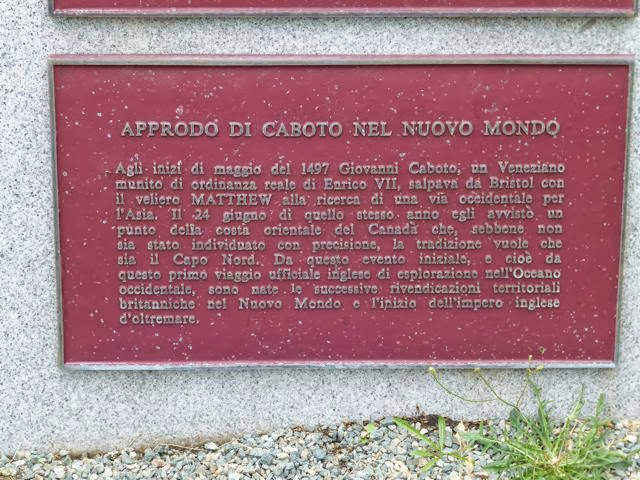 |
| A view is such an important thing to have in life. Here Limo and I were serenaded by loons . |
Our drive along the Cabot trail finally got us to the Cheticamp area of The Cape Breton Highlands national park. Our campsite was in a small local cove now called Corney Brook but previously known as Cap Rouge. This area was home to Acadians before the expulsion by the British and then again when the park was created and moved the remaining villagers of Cap Rouge out of the new park into the area of Cheticamp.
 |
| The perfect campsite facing the setting sun at Corney Brook |
Along the road there were signs posted everywhere for moose, but we saw everything that told us they were there but never a moose. Instead we saw all manner of other animals including draft horses.
I was also in search of Philip Glass. I knew that he summered in Cape Breton and that he frequented a Buddhist monastery north of Cheticamp. Glass was as elusive as moose.
 |
| North and South Harbors along the Cabot Trail |
A Canadian National Park Interpreter sang, danced and cooked potato pancakes as he told us the story of Acadians the last we were devoured by mosquitos. All of this was done over an hour and a half in English and French. It may sound corny but it was beautifully and emotionally done and one of the best experiences of our travel entertainment.
 |
| Great coastline for Kayaking |
What was not elusive where some of the greatest vistas of the entire trip. We had weathered rain and mosquitos, but when we arrived on the West coast of Cape Breton the weather cleared and sun bathed us for our final three nights in Cape Breton.
I took Limo on long walks up and down mountains and boreal habitats of great fragility and beauty. The Skyline trail is an eight mile trail that circles along several ridges exposing visitors to a sublime experience. Part of the journey is through a very sensitive ridge where walkway is elevated above the ground protecting it from travelers. Here Limo was not allowed and took a long nap in the car while experience it on my own.
On another day I explored a domed which is a very rare habitat that resembles a water drop on a counter, for example. The amount of water is immense but it remains intact and grows as rain buildup expands the edges. The vegetation of larger plants disappear except at the edge of the bog that is typically ringed by trees. The expanse of the bog was of a circle almost across.
Along the boardwalk we came across places where a moose had laid and pooped but no moose.
Finally leaving Kouchibouguac National Park many days later in northern New Brunswick along a lumber road where I had not seen a car in miles I spotted my one and only moose of the trip. He was a young male and rather majestic and startled. My traveling companion decided to protect me and started barking and you guessed it, the moose made for the forest. Oh well, I got to enjoy him for less than a minute but at least I saw one.





































































